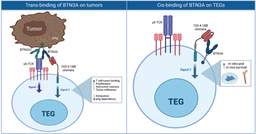Highlights of the BMC Series – April 2025
Published in Healthcare & Nursing, Computational Sciences, and Genetics & Genomics

BMC Genomics - Growth resilience to weather variation in commercial free-ranging chickens in Ethiopia

Chicken farming is a growing industry in Ethiopia and demand is expected to increase by over 200% in the next 25 years. The majority of flocks are made up of indigenous breeds that are adapted to local conditions. However, a growing portion is made up of imported high-productivity breeds that fail to thrive due to increasing extremes of temperature and other climate-change induced environmental stressors.
This paper aimed to investigate the effects of changing weather conditions on the growth of commercially raised chickens by looking at both growth resistance phenotypes and associated genomic architecture. Over 1,500 cross-bred chickens were weighed weekly and were genotyped for this study. Weekly growth was compared to weather patterns to determine resilience phenotypes and genetic markers were identified for these phenotypes.
The authors found that growth was significantly impacted by temperature, humidity, and precipitation. They also found significant genomic variance between resilience phenotypes and identified specific candidate genes associated with lipid metabolism and adipocyte homeostasis. These results could be used to breed chickens that are both highly productive and adapted to local weather conditions.

Anemia in women of reproductive age is a prevalent problem worldwide, and India has one of the highest rates at 57%. Efforts to reduce the prevalence of anemia have focused on ways to increase the availability and distribution of supplements to prevent and treat anemia. However, there has not been much focus on interventions to increase consumption of supplements and understanding of medical guidelines.
In this longitudinal cluster randomized controlled trial, an intervention package that focused on changing social norms was tested as a way to increase iron folic acid consumption among women of reproductive age. The intervention package comprised community-based education sessions, health communication videos, and hemoglobin testing. Over 4,000 women were recruited for the trial and were randomized by geographical cluster to either the intervention or the control.
The results showed that the intervention improved social norms around supplement consumption compared with the control as well as increased consumption more in intervention communities. This highlights a potentially useful way to increase uptake of important micronutrient supplements and reduce the burden of anemia.
BMC Primary Care - Exploring the relationship between cultural and structural workforce issues and retention of nurses in general practice (GenRet): a qualitative interview study

Nurses are a vital part of healthcare services, but current shortfalls in the nursing workforce are expected to worsen in the coming decade. In England, the shortage of nurses is especially acute in general practice, with up to 28% of nurses considering leaving general practice within one year.
In order to understand the factors that both encourage and discourage nurses to stay in general practice, the authors of this paper conducted a qualitative study. They interviewed 41 current and former general practice nurses and nurse leaders in England and Wales to explore how general practice culture and structure support or challenge workforce retention.
The findings indicate that a range of cultural and structural issues affect nurses’ intention to remain in general practice in both positive and negative ways. These issues include recognition of the value of nurses in general practice, limited input into decision-making, and access to professional development and representation. These insights suggest ways that stakeholders, including policy makers, employers, and professional organizations, can support nurses to remain and flourish in general practice.
BMC Gastroenterology - An artificial intelligence model utilizing endoscopic ultrasonography for differentiating small and micro gastric stromal tumors from gastric leiomyomas

Gastric stromal tumors (GSTs) are a subtype of gastrointestinal submucosal tumors (SMTs) that have high malignant potential and often need aggressive surgical and pharmaceutical intervention. Gastric leiomyomas (GLs) are a less-common subtype of SMTs that are usually benign and require treatment only if they grow or cause other symptoms. Differentiating between these two subtypes is crucial during the diagnostic process, but accurately distinguishing them using endoscopic ultrasonography is challenging, especially for smaller tumors (<2.0 cm).
To address this challenge, the authors of this paper created an artificial intelligence (AI) model trained on images of confirmed GSTs and GLs. The model was then validated on a different set of images.
The AI model was able to accurately differentiate between GSTs and GLs smaller than 2.0 cm. When multiple images of each tumor were used in the AI model, its diagnostic efficiency was better than that of clinical prediction models and endoscopists. This model could offer valuable support to clinicians to accurately diagnose and treat small SMTs.
Follow the Topic
-
BMC Primary Care

Previously known as BMC Family Practice, this is an open access, peer-reviewed journal that considers articles on all aspects of primary health care research.
-
BMC Nutrition

BMC Nutrition is an open access, peer-reviewed journal that considers articles on all aspects of nutritional sciences.
-
BMC Gastroenterology

This is an open access, peer-reviewed journal that considers articles on all aspects of the prevention, diagnosis and management of gastrointestinal and hepatobiliary disorders, as well as related molecular genetics, pathophysiology, and epidemiology.
-
BMC Genomics

This is an open access, peer-reviewed journal that considers articles on all aspects of genetics, genomics and proteomics.
Related Collections
With Collections, you can get published faster and increase your visibility.
Genomics of invertebrates
Invertebrates inhabit a wide range of habitats and represent a large array of species including insects, mollusks and crustaceans. Thus, they play crucial roles in ecosystems and are essential for ecological balance. Advances in genomic technologies such as high-throughput sequencing and transcriptomics have opened new avenues for understanding the genetic basis of invertebrate's biology, evolution, and interactions with their environments. As more and more genomes are being sequenced and our ability to analyze these genomes improves, so does our understanding of the intricate biological mechanisms that govern invertebrates' lives.
Understanding the genomics of invertebrates is critical for various fields, including agriculture, environmental conservation, and human health. For example, sequencing the genome of the mosquito Aedes aegypti, a major vector of diseases such as dengue, Zika, and Chikungunya, has provided insights into its insecticide resistance and behaviour, aiding in the development of targeted control strategies such as gene-editing technologies. Similarly, studying the genetics of the honeybee (Apis mellifera), a key pollinator for global agriculture, has helped to understand factors affecting colony health, including pesticide sensitivity and disease resistance. As invertebrates form the foundation of many ecosystems, research on their genomics should be at the forefront of strategies to protect our environment and its ecological balance.
Topics of interest include, but are not limited to:
•Genome organization and evolution of invertebrate species
•Genomic insights into insect vectors and their parasites
•RNA-Seq applications in invertebrate research
•Transcriptomics studies on invertebrates’ ecological interactions
•Functional genomics of invertebrates’ immune responses
•Evolutionary genomics of adaptation to extreme environments
•Metagenomics of invertebrate-associated microbiomes
•Genomic approaches to study invertebrate behaviour
•Population genomics and conservation genetics of threatened invertebrates
•Genomic resources for biocontrol agent development
All manuscripts submitted to this journal, including those submitted to collections and special issues, are assessed in line with our editorial policies and the journal’s peer review process. Reviewers and editors are required to declare competing interests and can be excluded from the peer review process if a competing interest exists.
Publishing Model: Open Access
Deadline: Dec 24, 2025
Genomics of microbiomes
The study of microbiomes has emerged as a dynamic field at the intersection of genomics, ecology, and health sciences. Microbiomes encompass the diverse communities of microorganisms, including bacteria, viruses, and unicellular eukaryotes, residing in various environments, such as the human body, food, soil, and aquatic systems. Understanding the genomic makeup of these microbiomes is crucial for unraveling their complex interactions with hosts and the environment. As advances in sequencing technologies, including single molecule sequencing, metagenomics and single cell omics, continue to evolve, researchers are better equipped to explore the rich genetic diversity (including pangenomes and epigenomes) and functional capacities of microbiomes across different ecosystems.
Investigating the genomics of microbiomes is pivotal for addressing critical questions in ecology, health, disease, and environmental sustainability. For instance, recent breakthroughs in the field have illustrated how microbiomes influence human health, from their roles in metabolism and immune function to their impact on mental health. Furthermore, understanding the genomics of environmental microbiomes can provide insights into biogeochemical processes and ecological resilience. As we deepen our knowledge of these microbial communities and develop computational biology methods to model their functionality, we stand to enhance our ability to harness their potential for applications in medicine, agriculture, and environmental management.
Future research in this area holds the promise of transformative advances in our understanding of microbiomes. The integration of multi-omics approaches, combining genomics with transcriptomics, proteomics, and metabolomics, may lead to a holistic view of microbial community dynamics and their functional implications. Additionally, developments in artificial intelligence and machine learning could further accelerate discoveries, enabling the identification of novel microbial functions and their roles in health and disease. As we continue to explore these intricate relationships, we can anticipate innovative strategies for harnessing microbiomes for therapeutic and environmental applications.
Topics of interest include, but are not limited to:
•Genomics and epigenomics of host-microbe interactions
•X-omics studies in environmental and host-microbiomes
•Advances in genomics of unculturable microorganisms
•Genome-guided development of synthetic microbiomes and consortia
•Microbiomes and environmental resilience: a genomic perspective
•The human microbiome: genetic diversity and functional potential
•Microbial adaptation and evolution in changing environments
•The role of microbiomes in antibiotic resistance and pathogenesis
•Computational and AI-driven methods for microbiome genomics
•Microbiome applications in sustainable agriculture and environmental management
All manuscripts submitted to this journal, including those submitted to collections and special issues, are assessed in line with our editorial policies and the journal’s peer review process. Reviewers and editors are required to declare competing interests and can be excluded from the peer review process if a competing interest exists.
Publishing Model: Open Access
Deadline: Jan 07, 2026





Please sign in or register for FREE
If you are a registered user on Research Communities by Springer Nature, please sign in